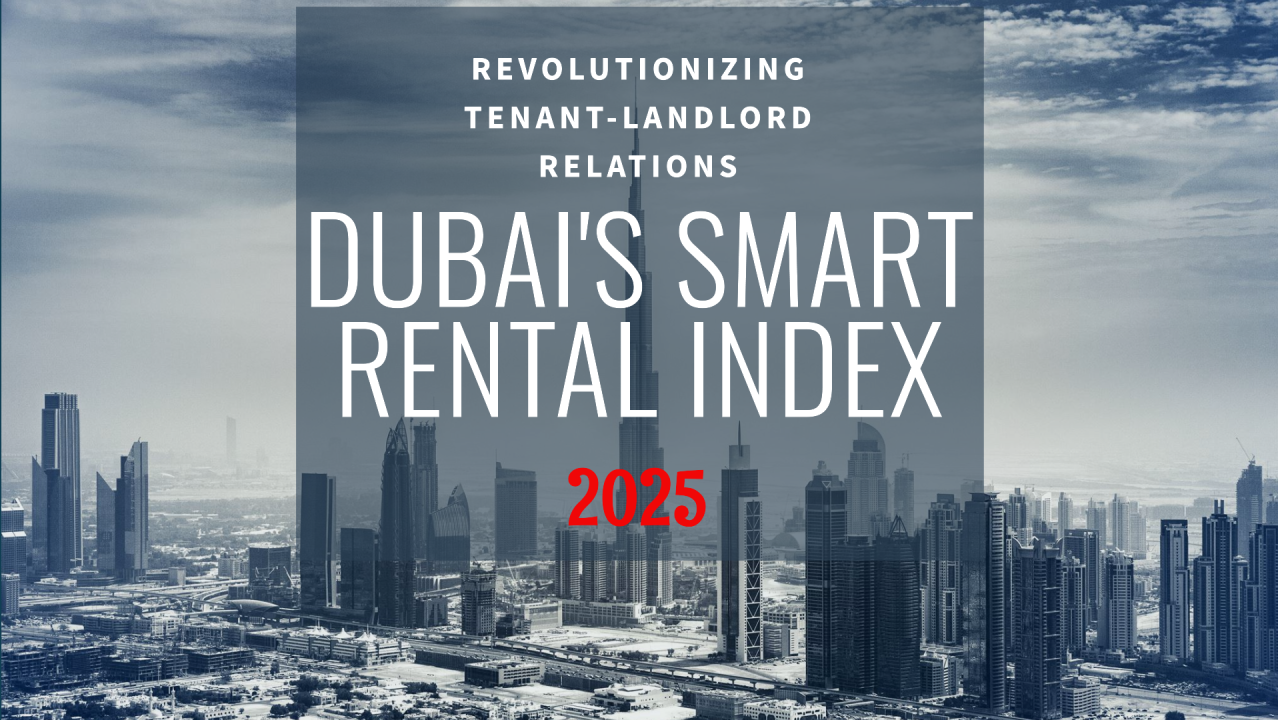Now Reading: 6 Powerful Effects of the New Rental Index in 2025
-
01
6 Powerful Effects of the New Rental Index in 2025
6 Powerful Effects of the New Rental Index in 2025

Table of Contents
New Rental Index: Dubai’s real estate market, valued at AED 761 billion ($207 billion) in 2024 with 170,992 transactions (up 40.3%), remains a global investment magnet, per X posts. In Q1 2025, 111 sales exceeded AED 10 million ($2.7 million), fueled by expatriates driving 60% of freehold purchases. Offering 6–11% rental yields in areas like Dubai Marina and no capital gains tax (CGT), Dubai outperforms U.S. markets (4–6%).
The Dubai Land Department’s (DLD) Smart Rental Index, launched January 2025, replaces the RERA Rental Index, using AI and a 1–5 star rating system based on 60+ factors like building condition and amenities. This tool, aligning with Dubai’s 2040 Urban Master Plan, regulates rent increases, impacting tenants, landlords, and investors. This article explores six powerful effects of the 2025 Smart Rental Index on Dubai’s real estate market, with U.S. investor considerations, without external links.
Why the Smart Rental Index Matters

The Smart Rental Index, covering all residential areas, uses real-time data to set fair rental valuations, replacing district-based models. It caps rent increases per Decree No. 43: no hikes if rent is <10% below market; 5% max if 11–20% below; 10% max if 21–30% below. With 900,000 lease contracts in 2024 (up 8%), the index aims to curb disputes, stabilize prices, and boost transparency, per DLD. Key benefits include:
- Fair Pricing: Aligns rents with property quality, reducing overcharges.
- Market Stability: Mitigates inflation, supporting 6.2% GDP growth.
- Investment Appeal: 5–9% yields in JVC; no CGT; 9% Corporate Tax (CT) above AED 375,000 ($102,000) offset by IRS Form 1116 credits.
- Tenant Protection: 90-day notice for increases; verifiable via RERA calculator.
Below are six effects reshaping Dubai’s 2025 rental market.
6 Powerful Effects of the Smart Rental Index in 2025
1. Enhanced Transparency in Rental Pricing
The index’s AI-driven valuations, based on building ratings (1–5 stars), consider structural quality, maintenance, location, and amenities like parking. Tenants in Downtown Dubai (6–7.5% yields) can verify increases via the RERA calculator, reducing disputes by 30%, per DLD.
- Impact: Empowers tenants to negotiate fair rents; boosts trust in AED 2 million ($545,000) lease agreements.
- U.S. Tax Consideration: Rental income reported on IRS Form 1040, Schedule E; verify expenses for deductions.
- Action: Use DLD’s REST app to check ratings for Emaar’s Dubai Creek Harbour units; contest unfair hikes via RERA.
2. Moderated Rent Increases in Prime Areas

The index caps rent hikes in high-demand zones like Palm Jumeirah (7–9% yields), where 2024 saw 10–20% increases. Villas and waterfront units, up 20% in 2024, face moderated hikes (5–10% max), encouraging tenant retention, per Cushman & Wakefield.
- Impact: Saves tenants AED 5,000–10,000 annually on AED 200,000 leases; stabilizes occupancy in Dubai Marina (6.5–8% yields).
- U.S. Tax Consideration: Lower rent hikes reduce Schedule E income; report assets over $50,000 on Form 8938.
- Action: Renew leases in Nakheel’s Palm Jumeirah properties; verify caps with DLD’s calculator.
3. Increased Landlord Investment in Property Upgrades
Higher star ratings justify larger rent increases, incentivizing landlords to improve properties in JVC (7.5–8.5% yields). Upgrades like smart lighting or maintenance boost ratings, raising rents by 5–10%, per ValuStrat.
- Impact: Enhances property quality; supports 35% sustainable transaction growth by 2025; lifts capital appreciation by 2–3%.
- U.S. Tax Consideration: Improvement costs deductible on Schedule E or capitalized on Form 8949; track via IRS Form 4562.
- Action: Landlords of DAMAC’s Business Bay units should invest in LEED-certified upgrades; register with RERA.
4. Shift in Tenant Migration to Affordable Areas
With moderated hikes in prime areas, tenants may stay put, but high-demand zones still push some to affordable areas like Dubai South (8–9% yields). The index’s transparency highlights cost savings, driving 10–15% tenant movement, per Business Outreach.
- Impact: Balances demand; boosts occupancy in Damac Hills 2; softens prime area rents by 5%.
- U.S. Tax Consideration: Rental income from affordable areas reported on Schedule E; CT credits on Form 1116.
- Action: Tenants explore Emaar South leases via DLD’s index; investors target off-plan units in Dubai South.
5. Boosted Investor Confidence in Rental Yields
The index’s fairness and stability attract U.S. investors to off-plan properties (60% of 2024 sales), offering 5–9% yields in Dubai Hills Estate. Predictable rents align with 5–8% price growth, per DAMAC, reducing risk.
- Impact: Increases transaction volumes by 5–7%; supports AED 2 million Golden Visa investments.
- U.S. Tax Consideration: Report yields on Form 1040; assets on Form 8938; accounts on FinCEN Form 114 ($10,000+).
- Action: Invest in Nakheel’s Al Furjan off-plan units; verify yields via RERA calculator.
6. Reduced Landlord-Tenant Disputes
The index’s clear criteria and RERA calculator cut disputes by 30%, per DLD, as tenants in Business Bay (6.5–8% yields) can validate increases. Fast-track arbitration via REDRC resolves issues in 30–60 days, saving AED 20,000 in legal fees.
- Impact: Enhances market trust; saves 0.5–1% in costs for AED 1.5 million leases.
- U.S. Tax Consideration: Arbitration fees deductible on Schedule E; report income on Form 1040.
- Action: Use REDRC for Emaar lease disputes; retain RERA-verified records for IRS.
Key Considerations for U.S. Investors
- Risks:
- Oversupply: 76,000 units in 2025 may soften non-prime rents by 5–10%, per Fitch.
- Compliance Costs: KYC and tax advisors add 0.5–1% to costs, offset by yields.
- Market Correction: 10–15% non-prime price drops by 2026, mitigated by 5–8% prime growth.
- Tax Compliance: UAE’s 5% VAT on commercial properties and 9% CT apply above AED 375,000. IRS requires Form 1040, Form 1116, Form 8938, Form 4562, and FinCEN Form 114.
- Regulatory Compliance: RERA mandates 90-day notices and KYC; AML fines up to AED 500,000. Verify DLD registrations.
- Currency Stability: AED pegged at 1 USD = 3.67 minimizes exchange risk.
Conclusion
The 2025 Smart Rental Index revolutionizes Dubai’s $207 billion real estate market by enhancing pricing transparency, moderating rent hikes, incentivizing property upgrades, shifting tenant migration, boosting investor confidence, and reducing disputes. These effects, supporting 5–9% yields in zones like Dubai Marina, Palm Jumeirah, and JVC, align with Dubai’s Digital Strategy 2033. U.S. investors, leveraging no CGT, Golden Visa benefits, and IRS deductions, can optimize returns by targeting RERA-registered developers (Emaar, Nakheel, DAMAC) and using DLD’s tools. The index cements Dubai’s status as a transparent, high-yield investment hub. Rental Index
read more: 5 Strategic Golden Visa Benefits for Investors in 2025





















